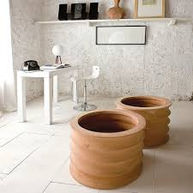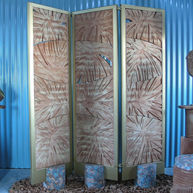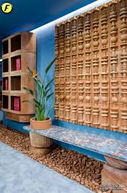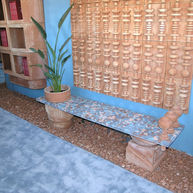TERRACOTTA IMPRUNETA
Tuscan terracotta is known for its best properties, making it one of the most famous terracotta in the world. Due to its unique composition, ie the presence of galestro and iron oxide, clay from Impruneta is one of the best clays in the world. Thanks to this, the products made of this clay have high mechanical strength and porosity, which are ideal for a healthy plant life. The high firing temperature and the ancient processing technology, together with the quality of the clay, make it possible to obtain terracotta of the highest quality, which is not only frost-resistant, but practically eternal if handled properly. In Tuscany you will find terracotta products older than 300 years. Centuries of experience allow accurate modeling of sophisticated Tuscan style, but also simple and modern design.
IMPRUNETA TERRACOTTA
This clay is the best in the world for its mechanical strength and frost resistance thanks to the presence of galestro, a soft rock typical of the Impruneta area, which gives the finished product frost resistance down to -30 ° C. This claim is based on the demonstrable resistance tests that Impruneta clay products have had to pass. Impruneta clay has a grainy structure, thanks to which it is rough to the touch, it is reddish with shades of white. Containers made from this clay are the best on the market and are often found in very important gardens around the world.


Due to its uniqueness, small area to mine and the increasing value of this soil every year, it is considered an investment and its price is therefore more expensive. The design is sophisticated and very well done. If the containers are made using the Colombino technique (entirely by hand), it is difficult to have perfectly identical copies of the same article of manufacture. Each piece is therefore completely unique.
And how is a terracotta product actually made? The best ceramic is handmade and its production time ranges from 25 to 40 days, depending on the size of the item and the production season. The larger the size and the colder the period, the longer the processing and drying cycle. The production cycle consists of individual steps, which are the production itself, respectively. production, product finishing, subsequent drying, kiln firing and then cooling, wetting and packaging. The care with which these phases are carried out determines, in addition to the quality of the clay used, also the service life and quality of the terracotta vessel. With the same clay, you can get lower quality products if you do not work well at these stages of processing. This is the fundamental difference between CAT-certified manufacturers and other manufacturers, where many times they fail the right procedure in terms of experience or too lengthy production process. They produce large quantities of products to save time and reduce production costs, use machines, iron molds instead of gypsum or fast firing cycles - all resulting in lower mechanical resistance of the products, resulting in premature deformation, cracking, cracking and total devastation.
















